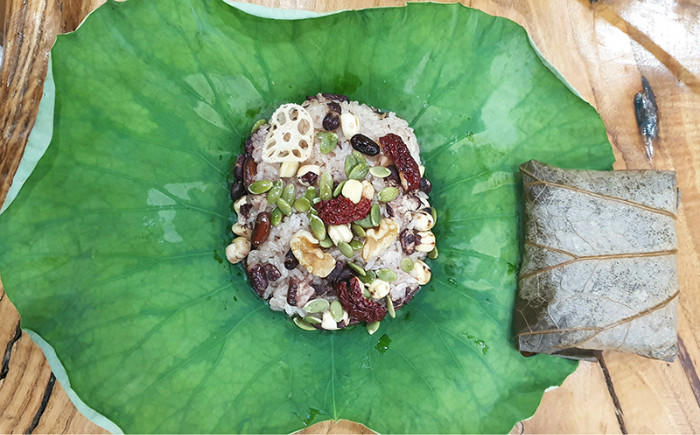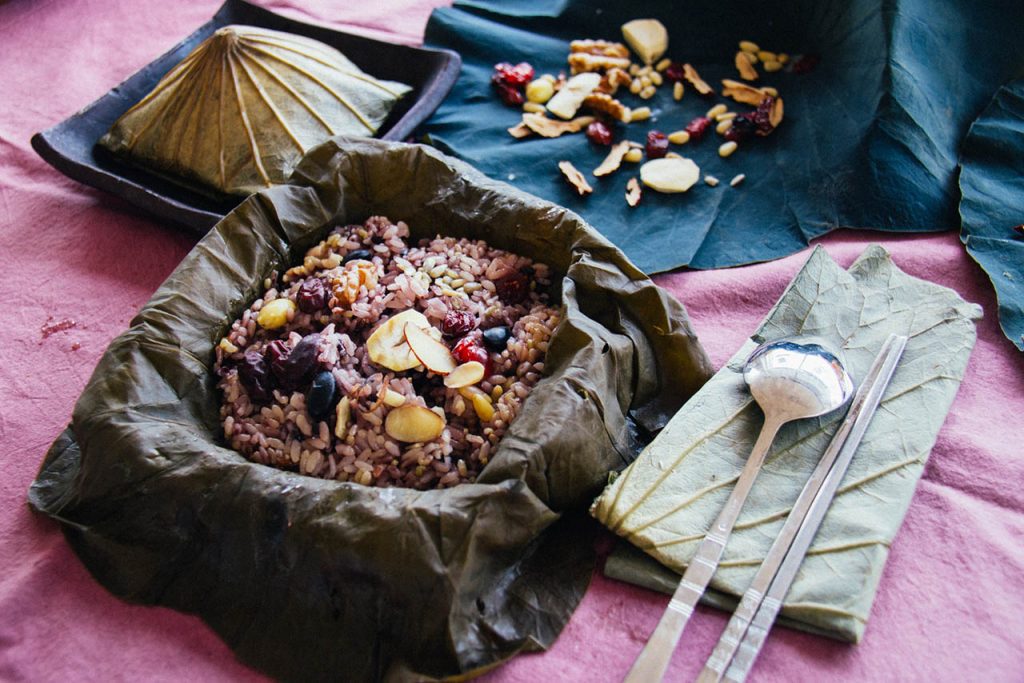
Food is often remembered by one key ingredient, be it the banana leaf that wraps the Southeast Asian dish nasi lemak (fragrant coconut rice) or the cherry blossoms hidden in a Japanese bento (lunch box).
In summer, Buyeo-gun County in Chungcheongnam-do Province is filled with the scent of lotus leaves. Once the capital of the Baekje Kingdom (18 B.C.-660 A.D.), the county is home to the scenic and lotus leaf-covered Gungnamji Pond, Korea’s first artificial facility of its kind. Built during the reign of Baekje King Mu (600-641), the pond in July is flooded with lotus flowers spanning more than 50 species such as the water lily Victoria amazonica.
Thanks to such abundance, every part of the lotus — leaves, roots and seeds — is used as an ingredient in the region’s cuisine. Thus yeonnipbap, or steamed rice wrapped in a lotus leaf, is one of the gems of Buyeo-gun cooking.
Grain, lotus roots, dates and nuts are put on a lotus leaf with rice and then steamed, creating a summer aroma that permeates a dining table. Peel off the leaf and chew on the warm rice to fully experience the soft and delicate lotus in the mouth. Lotus tteok galbi (short-rib beef patties) and lotus root japchae (stir-fried glass noodles) complement this gastronomic delight.
Ahn Hye-sug, who runs a restaurant specializing in lotus leaf dishes called Yeonnipdam, said, “The freshness of Buyeo-gun County’s yeonnipbap is different from those of other regions because in summer, we directly pick the lotus leaves and make the rice.”
Growing her own lotus flowers for use as ingredients, she added, “Yeonnipbap is a food featuring the condensed taste of nature’s pure flavor and scent.”
Source: Korea.net
